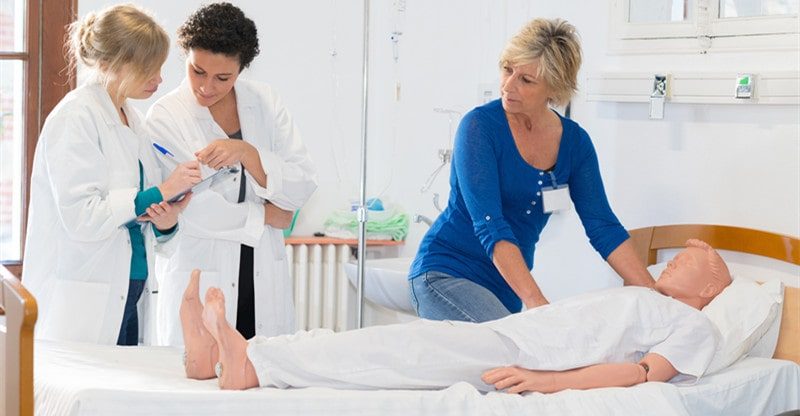6 Steps To Build An Effective Caregiver Training Program
The number of seniors in assisted living facilities is steadily rising. Hence, there’s an increasing need to provide quality training for caregivers. Proper training ensures that caregivers provide seniors with the best services and care.
Well-trained team members will become confident in their caregiving abilities. They will be able to engage better with the elderly and communicate with them more effectively. In addition, trained caregivers will also be equipped regarding medication management.
Furthermore, a trained caregiver will be able to recognize any changes in the seniors’ health or behavior. Therefore, it’s critical to create an effective caregiver training program. Developing an effective program may seem simple, but it’s not.
An effective training program is an excellent investment that’ll allow you to reap the rewards for a long time. However, for a program to be effective, it should include valuable training resources. So, below are essential steps to consider when creating a caregiver training program.
1. Incorporate Hybrid Learning
Thanks to technology, you can use online learning to supplement face-to-face instruction. Incorporating both methods can increase the effectiveness of a training program. For instance, including assisted living facility training videos in the training program is convenient because they accommodate caregivers’ schedules.
Using hybrid learning gives you options to satisfy every caregiver. Some caregivers prefer visual and auditory learning, making this method ideal. To better implement both methods, classify topics that need practical demonstration and those that don’t.
Topics with hands-on demonstrations can be done onsite, while the rest can be assigned online. If you have many caregivers, you’ll find hybrid learning particularly helpful.
2. Begin With The Basics
Before formulating a training program, it’s vital to remember that every caregiver is different. Therefore, don’t assume that those with relevant experience will be well-trained.
Basic caregiver training should incorporate lectures and practical demonstrations. Setting aside time for your care workers to understand what the training entails is also essential.
This time could be used as an introduction session. This session allows caregivers to ask questions as they learn their craft. Inform them about the number of training hours required. Remember that caregiver training should comply with state regulations.
3. Consider The Caregiver Wants
When developing a training program, it’s vital to develop methods that meet caregivers’ needs. To understand the needs of your care workers, consider inquiring. By asking questions, you can see where they’re coming from.
Listening to caregivers will help you better train them to deliver services requested by clients. It also results in well-designed training programs that ensure better consistency across the board.
Although you should stick to a repeatable process, you should find ways of customizing your approach. By customizing the process, you can cater to individuals with different learning preferences and personalities.
4. Motivate Caregivers For Training
Coming up with training opportunities isn’t enough to get individuals to show up. You might need to devise strategic approaches to get caregivers to put in the extra effort. You can do this by providing a motive that persuades caregivers to embrace opportunities.
The incentives you provide can either be monetary or not. Although you’re encouraged to pay caregivers to undergo training, you can try non-monetary incentives, such as presenting certificates of training completion and recognizing them during company events. In addition, you should consider making the training fun, engaging, and interactive.
Motivating caregivers and getting them excited will make training easier. After caregivers complete the training, you can give suitable rewards. Showing your appreciation for their hard work will make all the difference.
5. Encourage Continuing Professional Development
Learning for caregivers shouldn’t end with the initial training. By encouraging continuing training, caregivers will feel more empowered to carry out their duties.
To encourage continuing professional development, consider offering training opportunities. These opportunities can be mentoring programs or taking intensive courses.
A caregiver mentorship program can be a suitable approach for caregivers to transition into their roles. Mentors help with training aside from answering questions and providing support where needed.
6. Use Training To Build Company Culture
To build company culture, you can start by sharing core values. Through training, you can help your team members embody the facility’s core values like compassion, excellence, and human dignity.
Moreover, by letting caregivers bond and interact with each other, they can learn how to form personal connections with their clients and show empathy.
Incorporating fun activities and get-to-know sessions are vital to building company culture.
Bottom Line
Training caregivers can be an excellent investment. Trained caregivers not only reduce turnover but also help boost operations.
An effective training program can make your care workers more confident as they master requisite skills. As elderly patients benefit from competent and compassionate caregivers, your team feels more fulfilled for delivering the best possible care.




